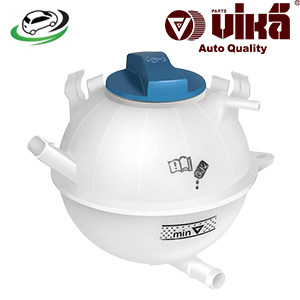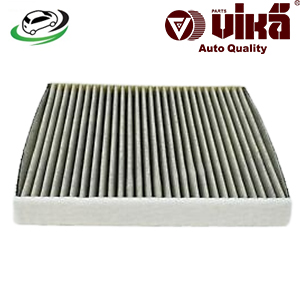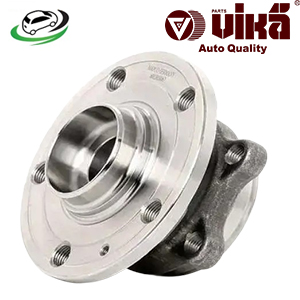-6%
Get Front Wheel Hub Assy Audi A3/Sportback 8P 2004-2013 / VW Caddy 2C/2K/Golf 1K/5K/Jetta 1T0498621
The wheel hub assembly is a crucial component in a vehicle’s suspension and drivetrain system. It serves as the central connection point between the wheel and the vehicle’s axle, allowing for smooth rotation of the wheels while accommodating various forces and loads. Understanding the function, types, benefits, and maintenance of the wheel hub assembly can help ensure your vehicle operates safely and efficiently.
Function of the Wheel Hub Assembly
- Connection Between Wheel and Axle:
- Primary Role: The wheel hub assembly connects the wheel to the vehicle’s axle.
- Mechanism: It provides a mounting point for the wheel and houses the bearings that allow the wheel to rotate freely.
- Support for Wheel Bearings:
- Primary Role: The hub assembly supports the wheel bearings, which facilitate smooth wheel rotation.
- Mechanism: The bearings within the hub assembly reduce friction and wear, enabling the wheel to spin with minimal resistance.
- Integration with Brake System:
- Primary Role: The hub assembly often integrates with the vehicle’s braking system.
- Mechanism: It provides a mounting surface for brake components such as the disc rotor, ensuring proper alignment and function of the braking system.
- Accommodation of Suspension Forces:
- Primary Role: The hub assembly handles various forces transmitted through the suspension system.
- Mechanism: It absorbs and distributes forces from the road, suspension components, and drivetrain, contributing to vehicle stability and handling.
- Alignment of Wheels:
- Primary Role: The hub assembly ensures proper wheel alignment and tracking.
- Mechanism: It maintains the correct positioning of the wheel relative to the suspension and steering components, contributing to accurate handling and steering response.
Types of Wheel Hub Assemblies
- Standard Hub Assemblies:
- Description: These are the most basic type of hub assemblies, often featuring a single bearing and a simple design.
- Advantages: Cost-effective and commonly used in many vehicles.
- Disadvantages: Limited in terms of features and performance compared to more advanced designs.
- Hub Assemblies with Integrated ABS Sensors:
- Description: These hub assemblies include built-in sensors for the Anti-lock Braking System (ABS).
- Advantages: Provides real-time data to the ABS system for improved braking performance and safety.
- Disadvantages: Higher cost and potential complexity in replacement due to integrated sensors.
- Hub Assemblies with Wheel Bearings:
- Description: These assemblies come pre-assembled with wheel bearings, simplifying installation.
- Advantages: Reduces installation time and ensures proper alignment of bearings.
- Disadvantages: May be more expensive due to the inclusion of bearings.
- Hub Assemblies for Four-Wheel Drive (4WD) Vehicles:
- Description: Designed specifically for 4WD vehicles, these assemblies handle higher loads and forces.
- Advantages: Provides enhanced durability and performance for off-road and high-torque applications.
- Disadvantages: Typically more expensive and may require specific maintenance procedures.
- Modular Hub Assemblies:
- Description: Modular designs allow for the replacement of individual components within the hub assembly.
- Advantages: Provides flexibility in repairs and replacements, potentially reducing costs.
- Disadvantages: May require more detailed knowledge and effort to maintain.
Benefits of Properly Functioning Wheel Hub Assemblies
- Smooth Wheel Rotation:
- Benefit: A well-functioning hub assembly ensures smooth and efficient wheel rotation.
- Explanation: Proper support for wheel bearings reduces friction and wear, contributing to a smoother driving experience.
- Improved Vehicle Handling:
- Benefit: Proper alignment and support provided by the hub assembly enhance vehicle handling and steering response.
- Explanation: Accurate wheel alignment and stability contribute to better control and maneuverability.
- Enhanced Brake Performance:
- Benefit: A properly functioning hub assembly supports the brake system, ensuring effective braking performance.
- Explanation: Proper alignment of brake components leads to more reliable and consistent braking.
- Reduced Noise and Vibration:
- Benefit: A well-maintained hub assembly minimizes noise and vibration associated with wheel rotation.
- Explanation: Proper bearing support and alignment reduce unwanted sounds and vibrations, contributing to a quieter ride.
- Increased Safety:
- Benefit: Reliable hub assemblies contribute to overall vehicle safety by ensuring proper wheel function and alignment.
- Explanation: Proper support and alignment help prevent issues such as wheel wobbling, braking problems, and handling difficulties.
Symptoms of a Faulty Wheel Hub Assembly
- Unusual Noise:
- Symptom: Grinding, humming, or clunking noises coming from the wheel area.
- Cause: Worn or damaged wheel bearings within the hub assembly.
- Consequence: Unusual noises often indicate bearing wear or failure, which can affect wheel performance and safety.
- Vibration or Wobbling:
- Symptom: Noticeable vibrations or wobbling while driving, especially at higher speeds.
- Cause: Imbalance or damage in the hub assembly or bearings.
- Consequence: Vibration or wobbling can lead to handling issues and potential damage to other suspension components.
- Steering Wheel Play:
- Symptom: Excessive play or looseness in the steering wheel.
- Cause: Wear or damage in the hub assembly affecting wheel alignment.
- Consequence: Steering wheel play can lead to reduced control and handling precision.
- Abnormal Tire Wear:
- Symptom: Uneven or excessive tire wear.
- Cause: Misalignment or damage in the hub assembly affecting wheel alignment.
- Consequence: Abnormal tire wear can reduce tire lifespan and affect vehicle handling.
- ABS Warning Light:
- Symptom: Illumination of the ABS warning light on the dashboard.
- Cause: Issues with integrated ABS sensors or wiring in hub assemblies with ABS sensors.
- Consequence: The ABS warning light indicates potential problems with the ABS system, which may require attention.
Maintenance and Replacement Tips
- Regular Inspections:
- Tip: Periodically inspect the wheel hub assembly for signs of wear, damage, or leaks. Check for unusual noises, vibrations, or steering issues.
- Frequency: Inspections should be part of routine vehicle maintenance, typically during tire rotations or service intervals.
- Timely Replacement:
- Tip: Replace a faulty or damaged wheel hub assembly promptly to prevent further issues.
- Indication: Replace the hub assembly if you notice symptoms such as unusual noise, vibration, or steering problems.
- Use Quality Parts:
- Tip: Choose high-quality wheel hub assemblies that meet or exceed OEM specifications for your vehicle.
- Reason: Quality parts ensure reliable performance, durability, and compatibility with your vehicle.
- Professional Assistance:
- Tip: Have a professional mechanic inspect and replace the wheel hub assembly if you are unsure about the process or if complications arise.
- Reason: Professional assistance ensures proper installation and function of the hub assembly.
- Check Alignment and Balancing:
- Tip: After replacing the wheel hub assembly, have the wheel alignment and balancing checked and adjusted as needed.
- Reason: Proper alignment and balancing ensure optimal vehicle handling and tire performance.
- Monitor Vehicle Performance:
- Tip: Pay attention to changes in vehicle performance, handling, and braking as indicators of hub assembly condition.
- Reason: Monitoring helps identify potential issues early and ensures timely maintenance or replacement.
- Keep Up with Routine Maintenance:
- Tip: Follow the manufacturer’s recommended maintenance schedule for your vehicle’s suspension and drivetrain components.
- Reason: Regular maintenance helps prevent premature wear and ensures the longevity of the hub assembly and related components.
Follow us on Facebook for more parts.



